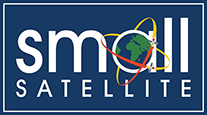Session
Session IV: Year in Review - Research & Academia
Location
Salt Palace Convention Center, Salt Lake City, UT
Abstract
The Realizing Rapid, Reduced-cost high-Risk Research (R5) project is pushing the envelope on minimizing cost and schedule for complex spacecraft that support low Technology Readiness Level payload demonstration in Low Earth Orbit (LEO). R5 has recently designed, built, launched, and operated multiple spacecraft that are iteratively and incrementally delivering improved payload hosting capabilities while maintaining cost targets (< $100k in materials per bus) and schedule targets (launching at least two spacecraft per year). This paper will describe the unique architecture, approach, technological advancements, and lessons learned from the project. The primary stakeholder for R5 is the Small Spacecraft Technology program within the Space Technology Mission Directorate at NASA with the project based out of Johnson Space Center.
To achieve the aggressive cost and schedule targets, R5 is redefining the understanding of how much rigor, quality, and robustness are required to succeed in high-risk LEO missions. Starting with a clean-slate for process and system design, R5 has charted a path, subsystem by subsystem, through commercial, industrial, automotive, and medical- grade components to arrive at a functional baseline bus that includes high-performance onboard computing, six degree-of-freedom control from a cold-gas propulsion system, automated mission operations, and other capabilities. R5 has also accounted for regulatory schedule impacts in its architecture development, which includes using communication systems that are faster to approve through the regulatory process. R5 Spacecraft 2 (R5-S2) and R5 Spacecraft 4 (R5-S4) are the first two R5 spacecraft to successfully make it to orbit. These spacecraft, which contain no space-rated components, quickly exceeded their minimum mission success criteria and operated throughout their 10 month mission lifetime in orbit. The data gathered during the mission and its consideration for the next generation of R5 spacecraft is covered below.
By its very nature, R5 is constantly learning lessons regarding component suitability, process, and architectural design decisions and their impact on the project’s goals. R5 has captured more than 70 lessons learned that span all subsystems and phases of spacecraft development and operations. R5 tracks the infusion of the lessons learned into the broader space community as a success metric. This paper provides details on lessons learned with the goal of enabling teams across the industry to leverage these lessons to improve their own cost, process, and schedule.
Document Type
Event
Launch Fast Learn Fast: Lessons Learned From the R5-S2 and R5-S4 Missions
Salt Palace Convention Center, Salt Lake City, UT
The Realizing Rapid, Reduced-cost high-Risk Research (R5) project is pushing the envelope on minimizing cost and schedule for complex spacecraft that support low Technology Readiness Level payload demonstration in Low Earth Orbit (LEO). R5 has recently designed, built, launched, and operated multiple spacecraft that are iteratively and incrementally delivering improved payload hosting capabilities while maintaining cost targets (< $100k in materials per bus) and schedule targets (launching at least two spacecraft per year). This paper will describe the unique architecture, approach, technological advancements, and lessons learned from the project. The primary stakeholder for R5 is the Small Spacecraft Technology program within the Space Technology Mission Directorate at NASA with the project based out of Johnson Space Center.
To achieve the aggressive cost and schedule targets, R5 is redefining the understanding of how much rigor, quality, and robustness are required to succeed in high-risk LEO missions. Starting with a clean-slate for process and system design, R5 has charted a path, subsystem by subsystem, through commercial, industrial, automotive, and medical- grade components to arrive at a functional baseline bus that includes high-performance onboard computing, six degree-of-freedom control from a cold-gas propulsion system, automated mission operations, and other capabilities. R5 has also accounted for regulatory schedule impacts in its architecture development, which includes using communication systems that are faster to approve through the regulatory process. R5 Spacecraft 2 (R5-S2) and R5 Spacecraft 4 (R5-S4) are the first two R5 spacecraft to successfully make it to orbit. These spacecraft, which contain no space-rated components, quickly exceeded their minimum mission success criteria and operated throughout their 10 month mission lifetime in orbit. The data gathered during the mission and its consideration for the next generation of R5 spacecraft is covered below.
By its very nature, R5 is constantly learning lessons regarding component suitability, process, and architectural design decisions and their impact on the project’s goals. R5 has captured more than 70 lessons learned that span all subsystems and phases of spacecraft development and operations. R5 tracks the infusion of the lessons learned into the broader space community as a success metric. This paper provides details on lessons learned with the goal of enabling teams across the industry to leverage these lessons to improve their own cost, process, and schedule.


